Product Name: KX1933 Seesaw
Product Code: KX1933
Size: 260*60*80mm
Weight: About 80g
Material: Wood + Metal Hardware Components + Plastic Components + Wood Glue
Color: Wooden color
Battery Required: No
Packing: 500pcs
Box Specification: 600*450*550mm
Seesaw, a children's toy involving more than two people. Sit on one end of the seesaw, one person goes up, and another goes down. Seesaw is a fitness sport; it is highly entertaining and is beloved by ethnic minorities such as the Korean ethnic group and the Russian ethnic group.
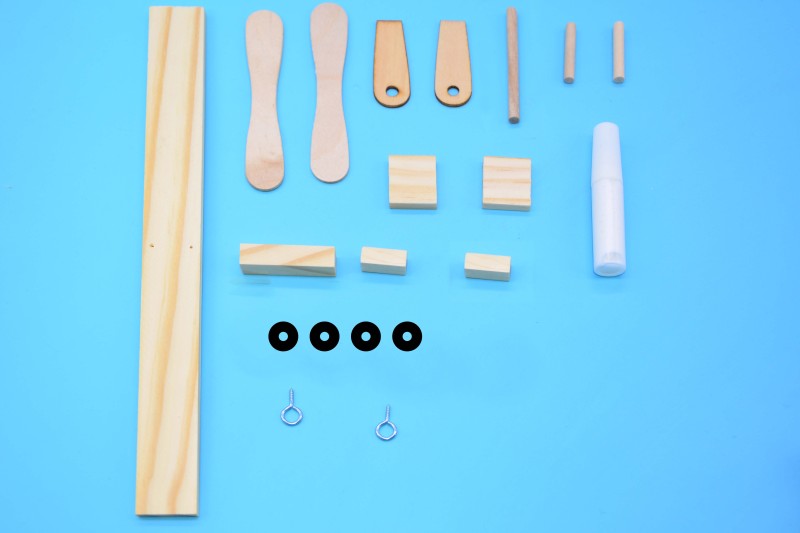
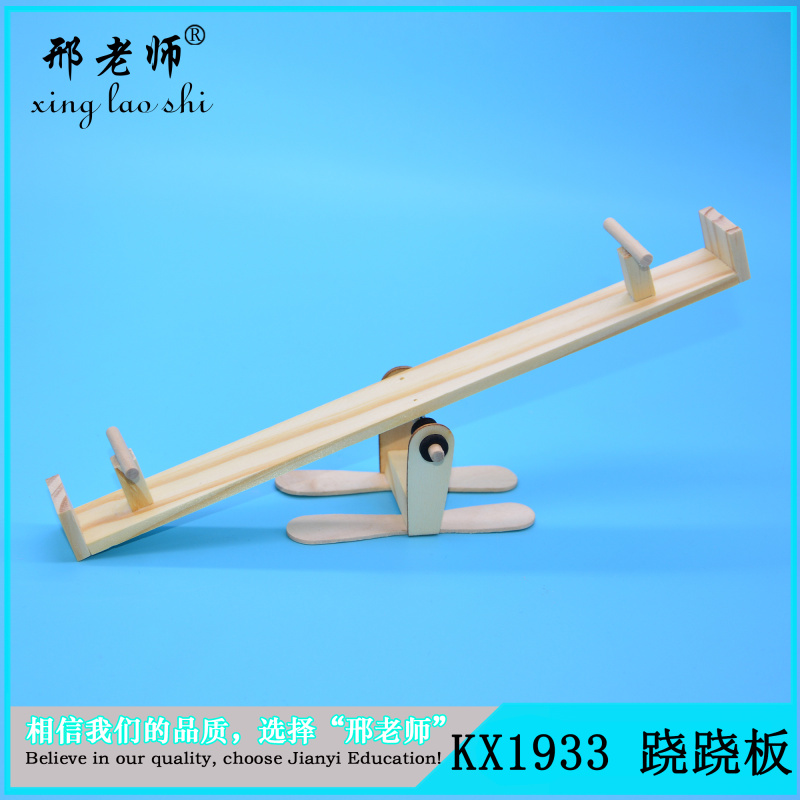
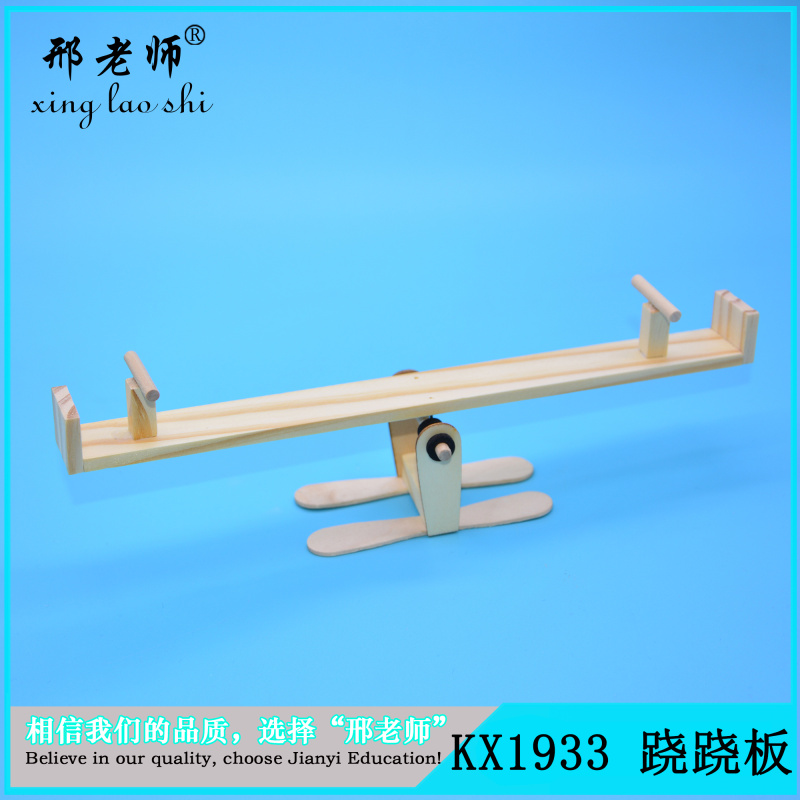
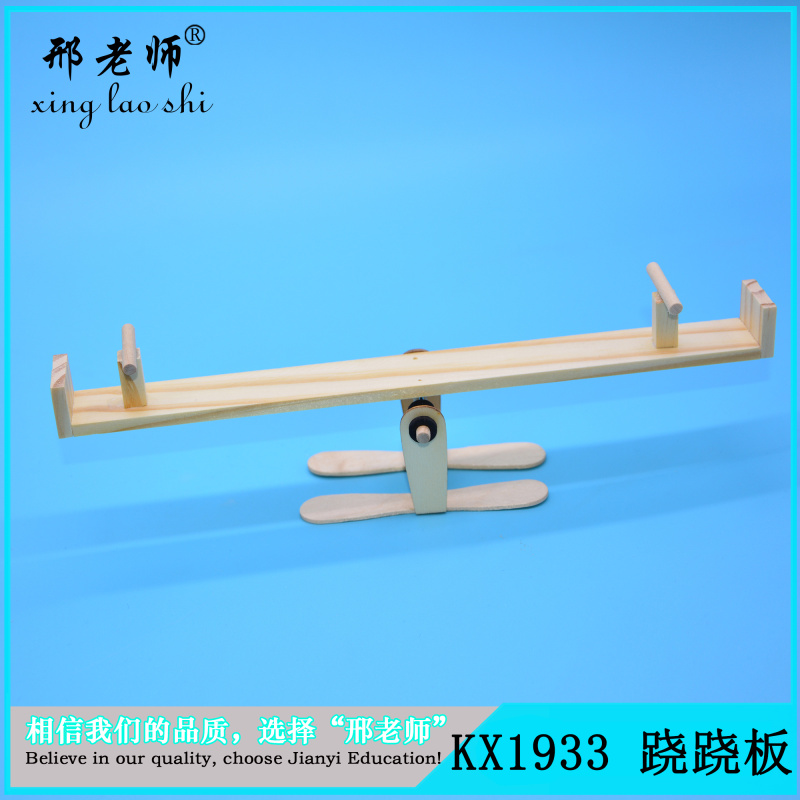
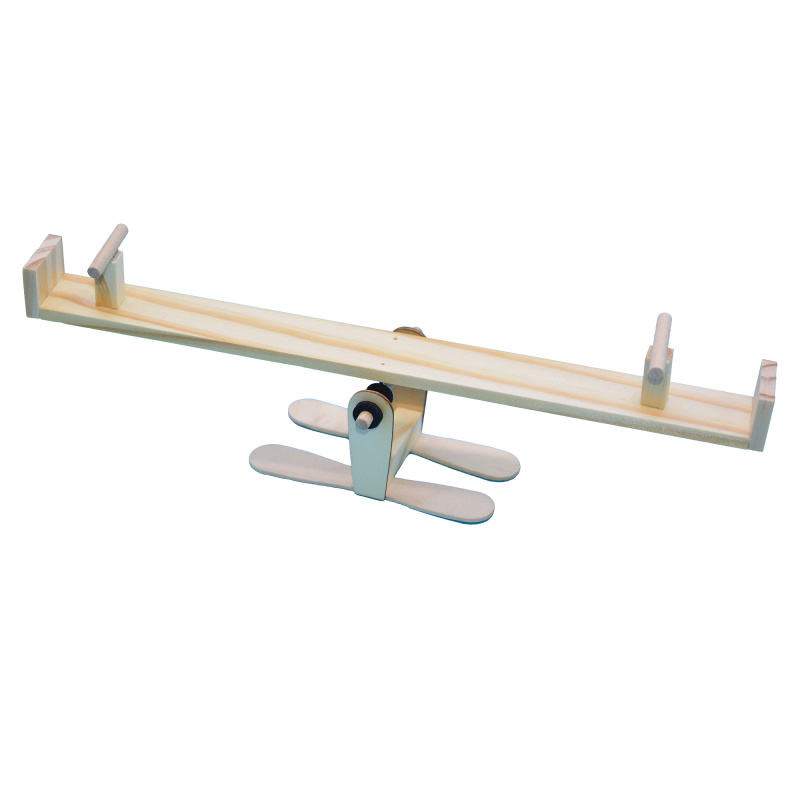
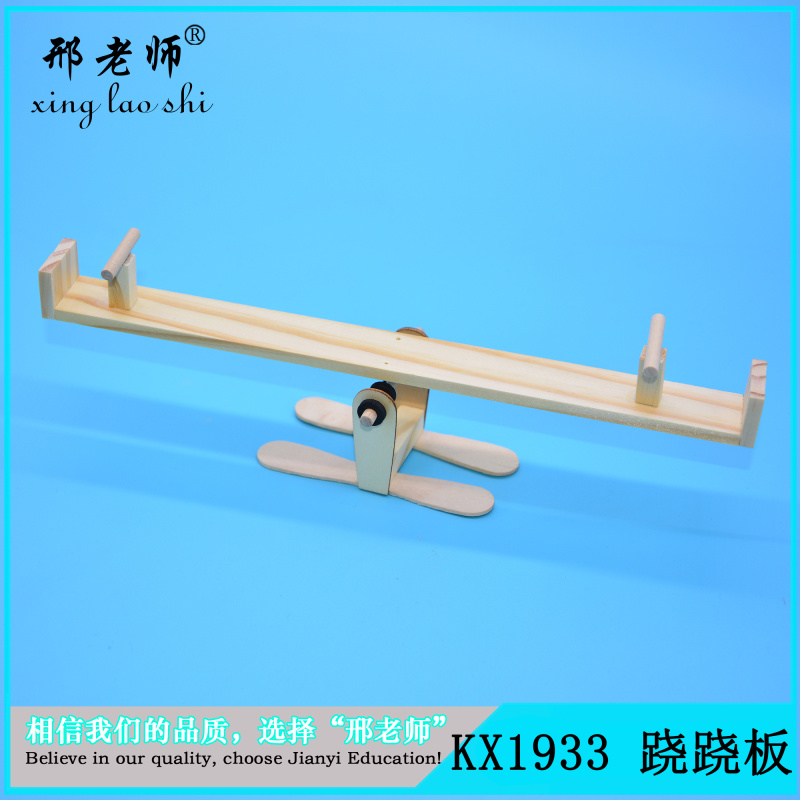
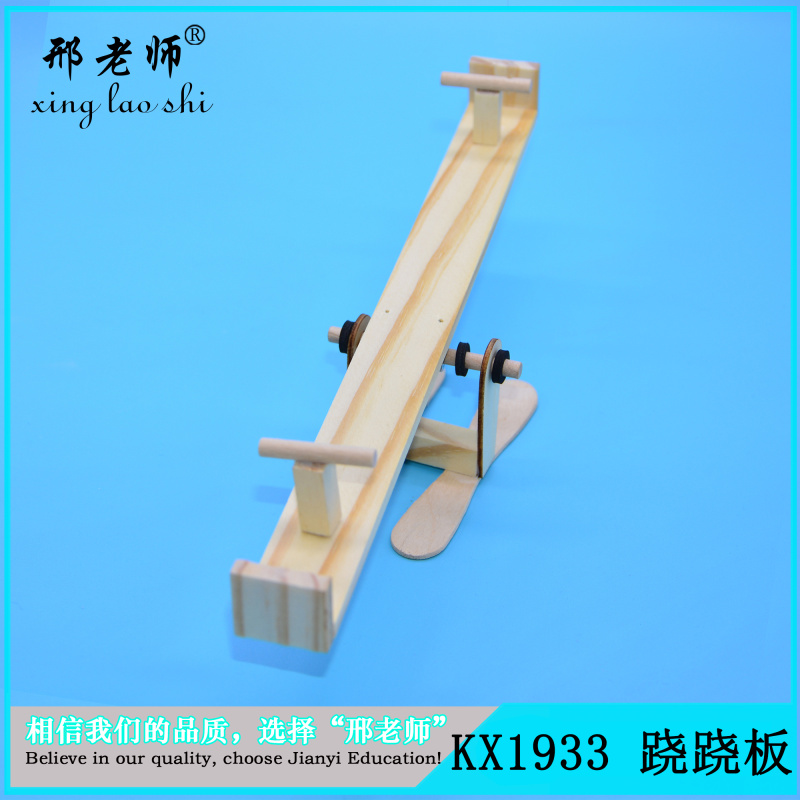
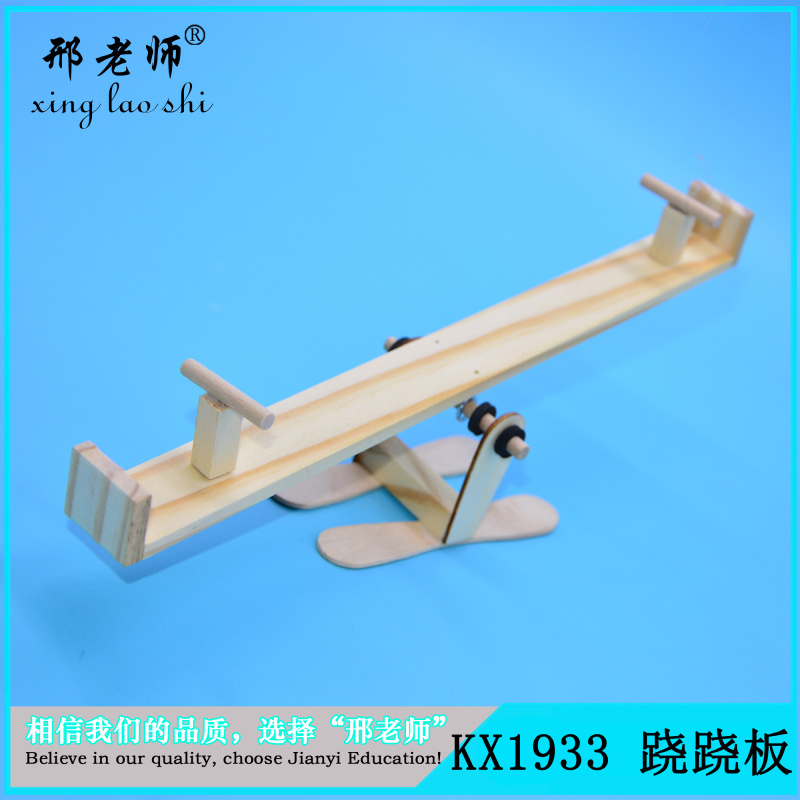
Folk Sports
In folk culture, playing the crossboard is a form of fitness sport; it is highly entertaining and is popular among ethnic minorities such as the Korean ethnic group and the Russian ethnic group.
2 Principles
The see-saw principle is based on the lever principle, where the pressure of a person on a see-saw is both the force and the resistance. The distance from the person to the fixed point on the see-saw is the force arm.
The gravity acceleration causes a up-and-down motion, where the higher object has a larger gravity acceleration than the lower one, so the higher one falls down, and simultaneously, under the action of the lever principle, the lower one is lifted up, and this cycle continues.
Three Riddles
one-sided love
wave after wave
one-sided love
wave after wave
3、Seesaw
1. Teaching Objectives
1. Can make hypothetical explanations for the balance of the lever scale through observation, experience, and the use of existing knowledge and experience; can recognize the balance laws of the lever scale through observation and experimentation.
2. Good at discovering and proposing problems in games; cares about the technological achievements of people using the principle of lever balance; willing to cooperate and communicate; happy to improve life with the knowledge learned. (Moral Education Goals)
3. Understand the balance condition of the lever rule; understand the balance phenomena in daily life.
II. Teaching Preparation:
According to the inquiry directions provided in the textbook, teachers should encourage students to play with see-saws before class and prepare the relevant materials for the inquiry, such as supports, lever rules, straight rules, hooks, weights, candles, etc. In accordance with the teaching design, teachers should also prepare other inquiry materials for students, such as designing tables and creating multimedia courseware.
III. Teaching Process:
I. Remembering and Sharing the Process of Playing the See-Saw and the Interesting Phenomena Discovered. By tapping into students' existing experiences,
Seesaw Teaching Design Lesson Plan
Section Two: Investigating How to Make a Lever Scale Balance. Organize students to use a lever scale to study the phenomenon of balance.
1. Propose the activity objective: "Guess based on your own life experience: How can you keep a lever scale balanced?
2. Student predictions.
3. Discuss in groups to develop a research plan.
4. Conduct an inquiry experiment.
5. Exchange experimental conditions and findings.
6. Summarize the laws of lever balance.
III. Balancing phenomena in daily life.
Fourthly, free activities: Play with the 'Candle See-saw' and explain the underlying principle.
V. Extension activities: Let's make a small toy similar to a seesaw.
Sixth, Extension Activities:
1. Make a small toy similar to a seesaw
2. Conduct a survey after class to find more examples of balance in daily life, and we'll share them in the next class.
Teaching Reflection:
In this lesson, students are led to start from their life experiences and recall the experiences of playing a seesaw. The lesson is accompanied by a seesaw teaching design.









